The Nahʔą Dehé or South Nahanni River is so storied within canoeing lore—staking out its rightful claim on many paddler’s wish lists—that it almost needs no introduction.
For those not already familiar with this northern river, it flows for 580 kilometers through Canada’s Northwest Territories, cutting between mountains and canyons and dropping dramatically at a waterfall that puts Niagara Falls to shame. As it charts its course southwest from the Yukon’s border through the traditional territories of the Deh Cho and Sahtu First Nations, it passes caves and hot springs, before joining the Liard River.
Part of the lure of the South Nahanni River is its remote location—but it also draws in adventure enthusiasts of all skill levels thanks to its whitewater and epic scenery.
Here are nine more reasons a Nahanni River canoe trip is a must-have experience, plus some tips on how to make one happen.
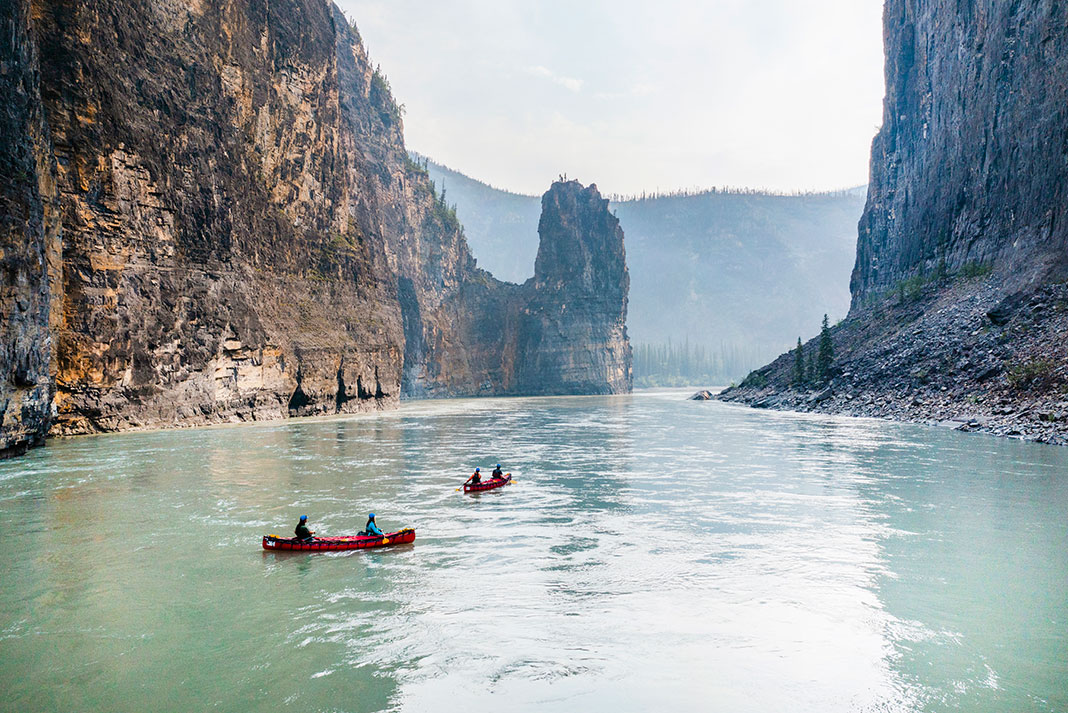
You’ll see scenery and geological formations unlike anywhere else in Canada
The landscape the South Nahanni River flows through is home to mountain ranges, towering canyons, deep gorges and alpine tundra. It’s no surprise that Nahanni National Park Reserve was the first site in the world to be granted UNESCO World Heritage Status in 1978.
But beauty alone doesn’t get you onto that list—unique geology does. In addition to four separate canyons up to 1,200 meters deep, the region’s noteworthy sites include the largest tufa mound in Canada, estimated to be 10,000 years old. The hardened calcium carbonate formed by thermal springs can be reached by barefoot hike up to its 30-meter-high summit.
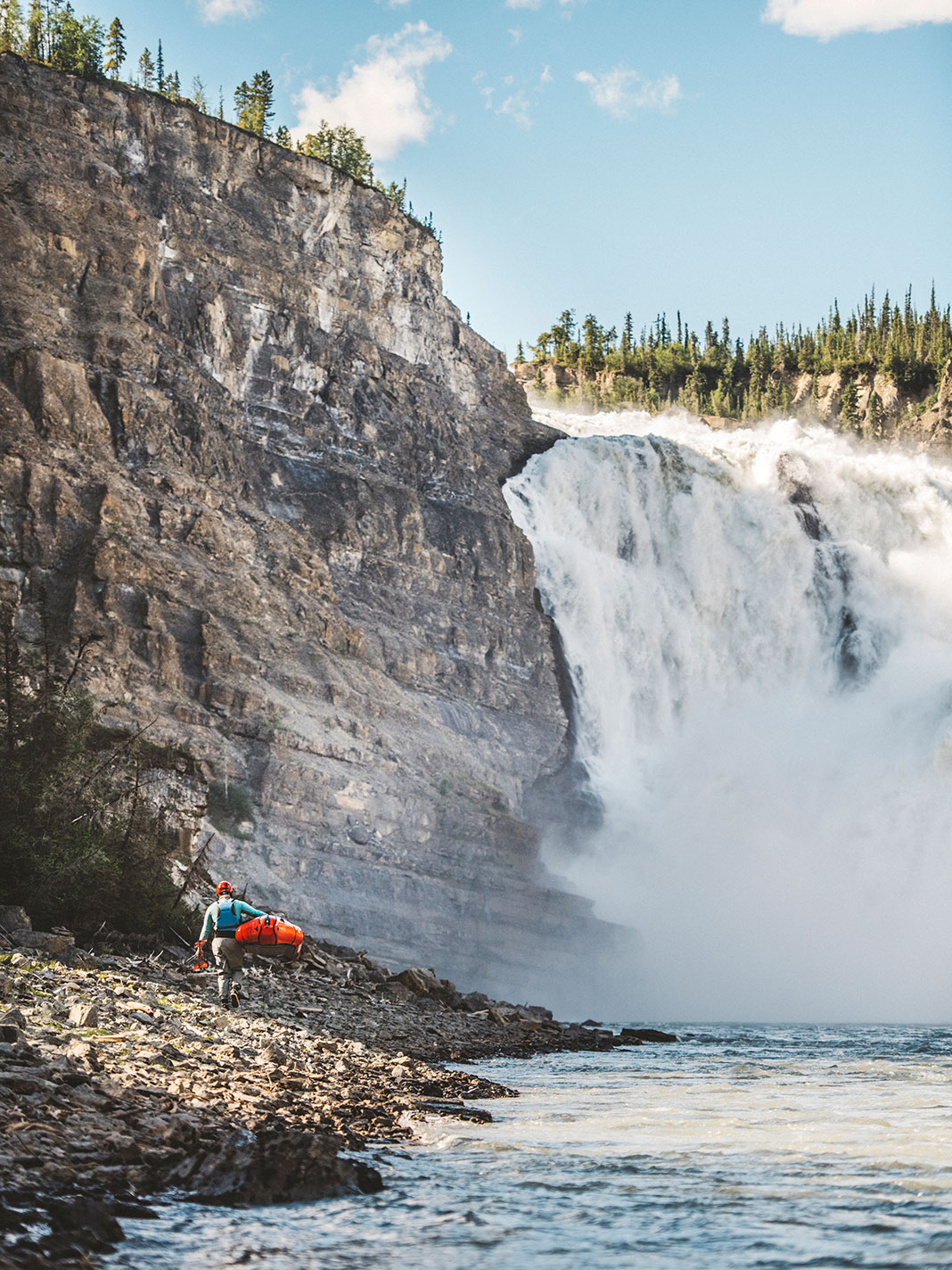
You’ll be rewarded with riverside hot springs after long days of paddling on the Nahanni River
While the ecologically sensitive tufa mound is off-limits for bathing, there are other hot springs made for weary bones, including Kraus Hot Spring. You’ll find this natural spa riverside after a 30-km paddle through First Canyon, where its sulphuric cue will let you know you’ve arrived. It may be smelly, but chances are you are too by this point. There’s no judgment here; just a place to rest your sore shoulders and arms.
You’ll witness the power of a waterfall taller than Niagara Falls
Virginia Falls or Náįlįcho is consistently described as “the continent’s most spectacular undeveloped waterfall.” And spectacular really is the word of choice for this drop in the Nahanni River. The waterfall is twice the height of Niagara Falls and responsible for the class II and III rapids directly downstream.
Needless to say, a 2-km mandatory portage around the falls is necessary for both rafters and kayakers. It’s a long haul with conveniently placed canoe stands along the way. If you want to break up the portage even further, you can opt to camp at the Parks Canada site here for up to two nights. Worthwhile excursions from the campsite include the 8-km hike to Sunblood Mountain and a chance to swim in the river.
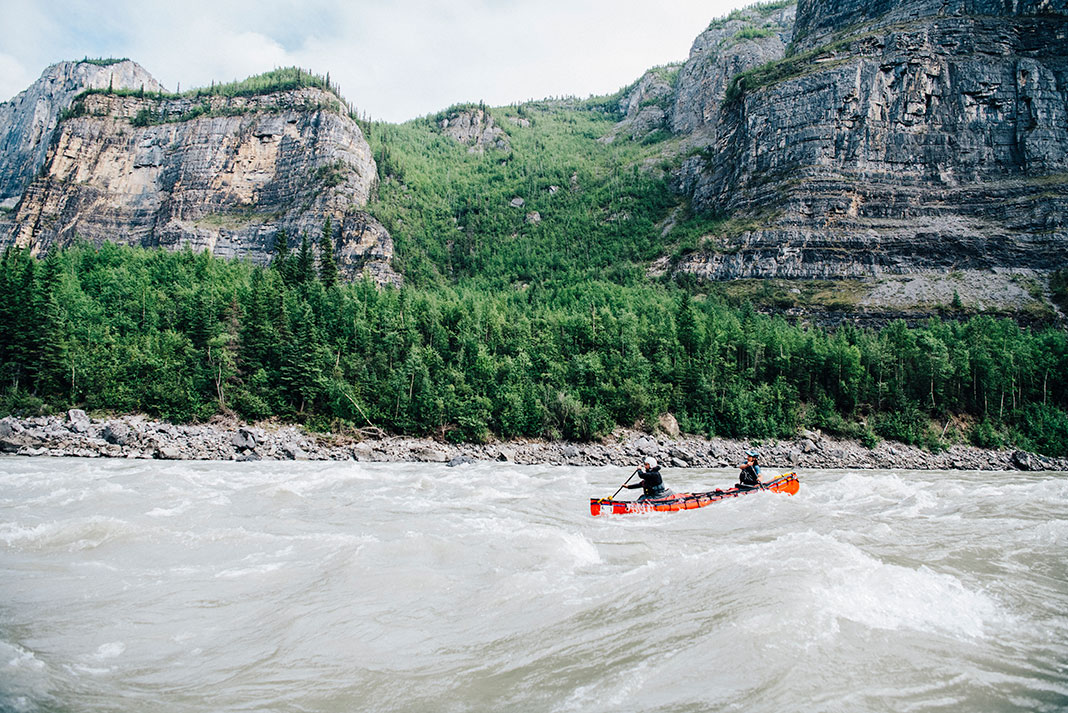
You’ll get to paddle with world-class outfitters and expert Nahanni River guides
Experienced whitewater paddlers with remote camping skills can safely navigate the river on their own between the months of June and September. But even if you fit into that category, signing up for a tour with one of the experienced Nahanni River outfitters will only enhance your experience.
After all, paddling here is as much about the river’s cultural heritage as it is about the scenery. For at least 10,000 years, this has been the traditional hunting grounds for the Dene people, who still use it for this purpose today. Nahanni River tours are led by knowledgeable guides, who will be able to share some of the stories and traditions that demonstrate how the Dene’s connection to the river runs deep.
Local outfitter Black Feather, for example, runs a cultural rafting tour alongside its classic Nahanni River expeditions by canoe. Likewise, Nahanni River Adventures and Canoe North Adventures offer Nahanni River guided canoe trips and rafting trips, with options for all skill levels.
Of course, if self-guided is more your style, Jackpine Paddle offers custom canoe training, food packing, canoe and gear rentals, and shuttles to get you to your adventure.
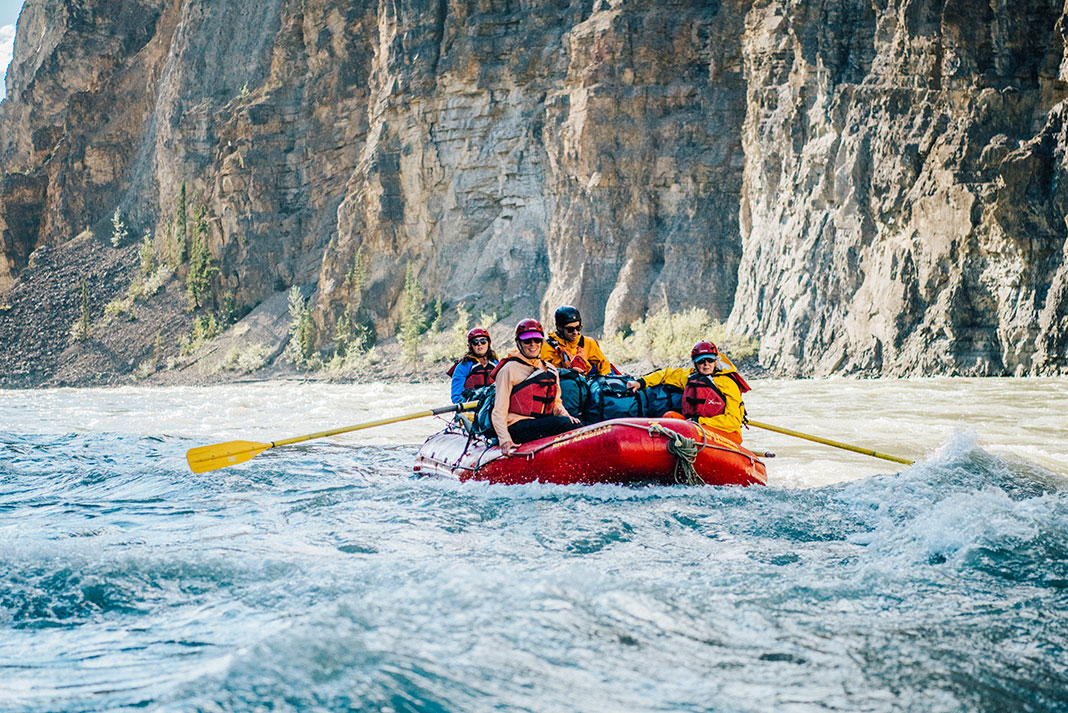
You’ll have an exclusive and brag-worthy experience
Despite being Canada’s most well-known northern park, only between 800 and 1,300 visitors manage to make their way to Nahanni National Park Reserve annually, many of which are day-trippers. In fact, only about 600 people paddle down the river every year, meaning you’re not only unlikely to encounter other people—you’ll also be among the few who are able to say they’ve done the trip.
A word of advice: Despite low visitor numbers, the park is popular relative to the number of people able to be accommodated. Visitation on the river is limited by the infrastructure at the Náįlįcho campsite, which can accommodate a maximum of 54 people nightly. Parks Canada reservations are required for trips down the river and must be made well in advance.

You’ll get a bonus sightseeing tour by plane
Since there are no roads leading into the park, you’ll need to access the Nahanni by bush plane, typically departing from nearby Fort Simpson and Yellowknife. In other words, every canoe trip here comes with a bonus—albeit mandatory—sightseeing tour by air.
The area’s floatplane operators—including Air Tindi and Simpson Air—are experts at transporting canoes, with the most popular put-in spots of Virginia Falls, Rabbitkettle Lake and Island Lakes being designated aircraft landing sites. For Nahanni River rafting, you’ll have no problem coordinating with a local outfitter, while kayakers might find they have to pay extra fees since kayaks are more difficult to strap to the outside of a float plane.
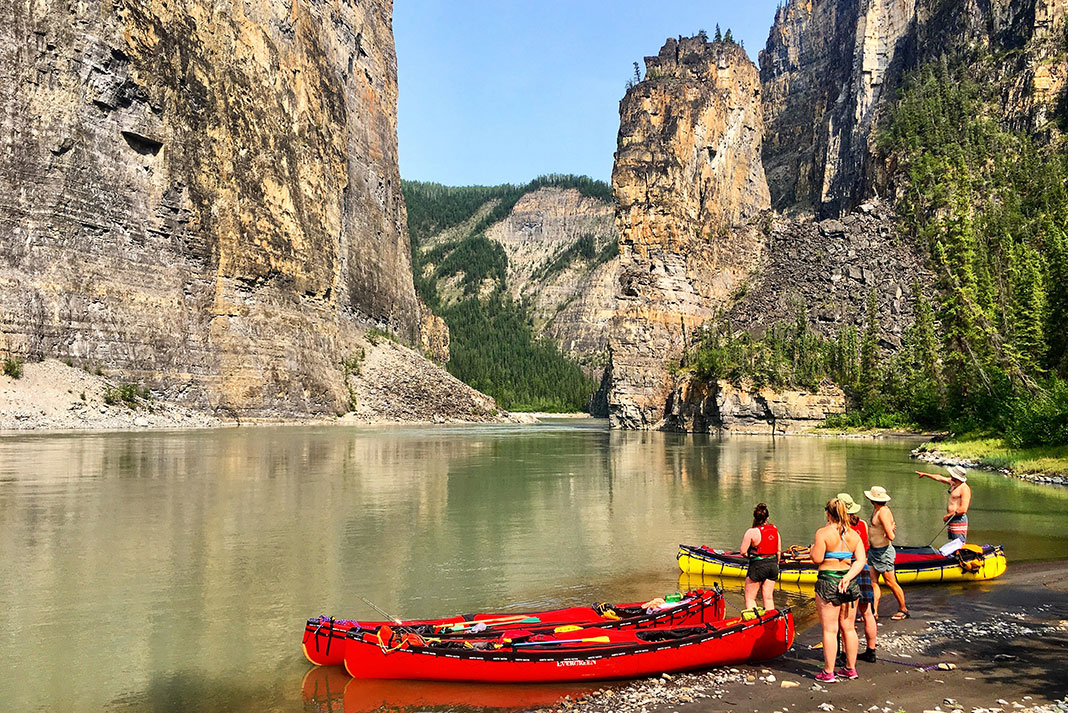
You’ll feel like you’re on a Canadian safari
Despite its relatively high latitude, Nahanni National Park Reserve’s wildlife is surprisingly diverse. Along the banks of the Nahanni River, you may spot grizzlies, black bears, moose, Dall’s sheep, white tailed deer, beavers, otters, red fox and some 180 species of birds, including rare trumpeter swans. And, although they’re more elusive, the park is also home to lynx, wolverines and a year-round population of woodland caribou.
Nahanni River fishing is also possible, with arctic grayling, lake trout, whitefish and northern pike able to be caught with a fishing permit. But the water here tends to be silty, so if you’re looking to lighten your load, leave the rod at home.
You’ll have a chance to watch the northern lights dance
While many people associate the aurora borealis’ colorful nighttime displays with sub-zero temperatures, the truth is that solar storms happen year-round. Its location under the auroral oval means the Northwest Territories is one of the best places in the world to watch them.
Although the midnight sun makes them nearly impossible to see between mid-April and late July, if you’re paddling on the Nahanni in August or the shoulder season of September, you could be in for a show. Historically, the greatest levels of solar activity occur around the autumn equinox; this is also when the skies are most likely to be clear of clouds. Some operators—including Indigenous-owned NARWAL—even offer dedicated nighttime aurora tours by voyageur canoe up the Yellowknife River in August and September.
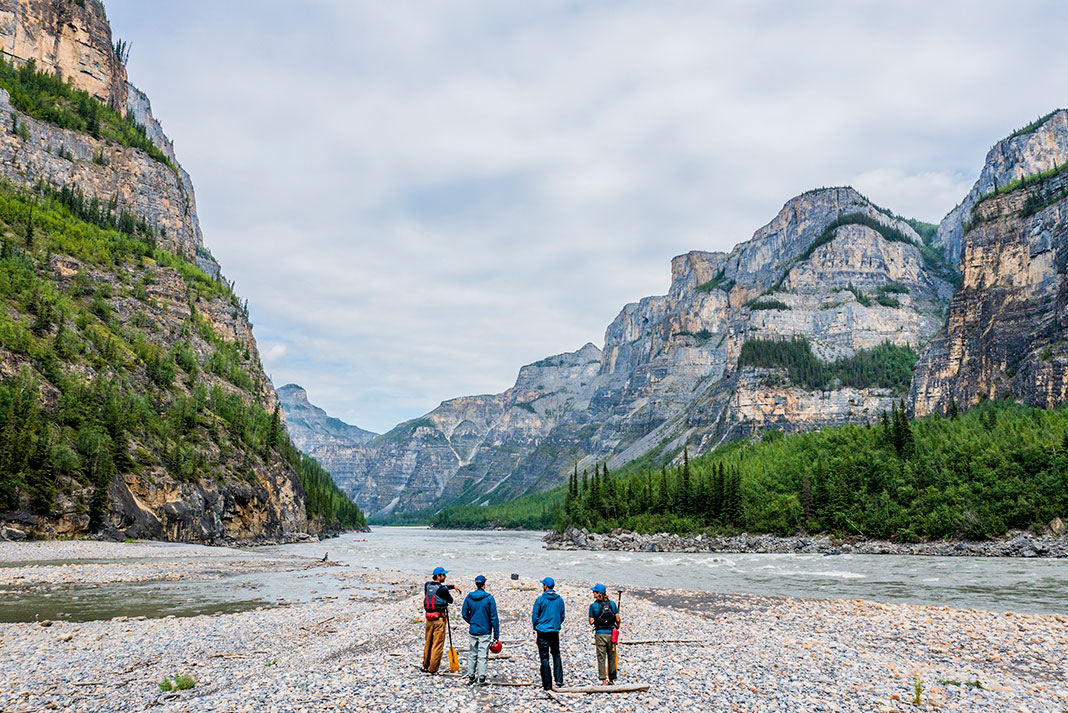
You’ll bond in a next-level way with your trip mates—and leave with memories that will last a lifetime
One of the most common complaints from outdoor enthusiasts is their trip wasn’t nearly long enough to truly disconnect. Trips down the Nahanni River, however, aren’t for the faint of heart or for the short of time: From Virginia Falls, it will take you between seven and 10 days to paddle the 212 km to Nahanni Butte. Starting from Rabbitkettle Lake is an additional 118 km, which will take you up to 14 days.
In other words, you’ll have plenty of time to disconnect, reconnect with your loved ones and form lasting new friendships.



Yep. I’ve done the Nahanni from the Moose Ponds /Mt Wilson >Nahanni Butte in 3 weeks, from Divide Lake /Broken Skull>Blackstone in 3 weeks, but this year I did it again – in 6 WEEKS (Divide>BrSkull>Nahanni>Liard>FtSimpson on the MacKenzie) so that I would HAVE TIME to TRULY APPRECIATE (hike & paddle) the TRULY UNIQUE and SPECTACULAR LANDSCAPE. If you have time, SPEND IT HERE, in this incredible & spiritually fulfilling place on our good green earth.